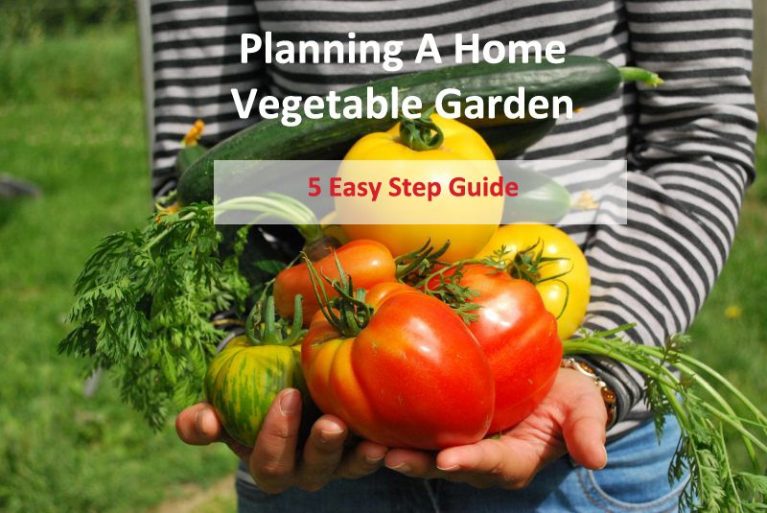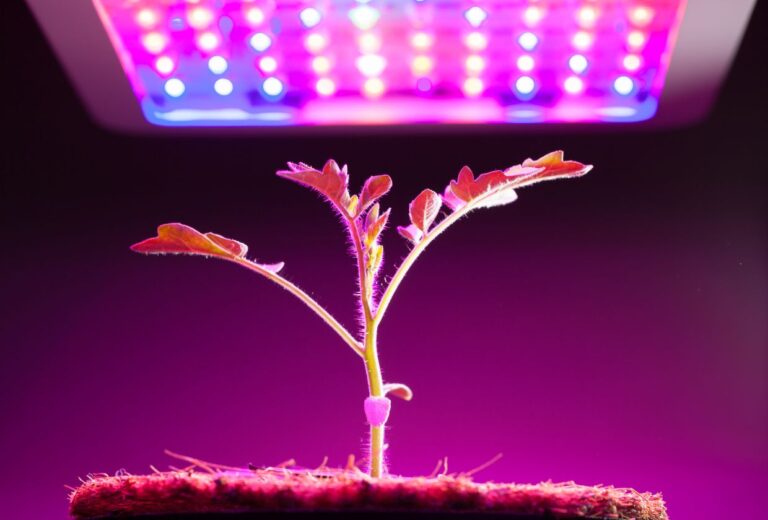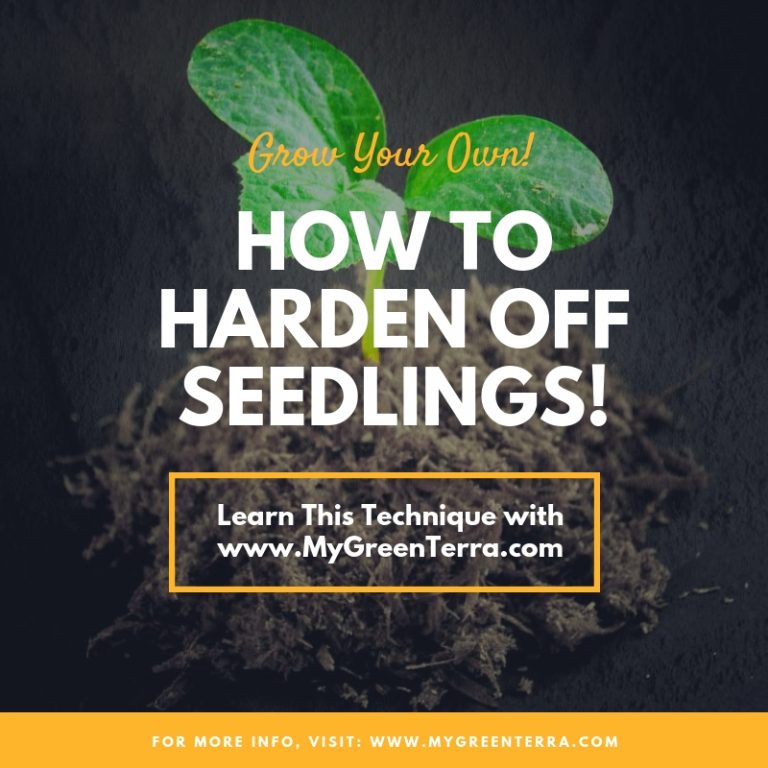From Garden to Table: Harvesting and Saving Seeds for Future Harvests
I get commissions for purchases made through links in this post. View our Affiliate Disclaimer.
Saving seeds is a gardening practice you should be considering! As you nurture your garden, you’re not just growing food – you’re cultivating a potential treasure trove of seeds for future harvests. But are you maximizing the most out of your bounty? By selecting the right seeds, harvesting them at the perfect time, and storing them properly, you can secure a consistent supply of your favorite crops. But what if you’re not sure where to start? What if you’re unsure about the best techniques for preserving seed quality and purity? You’re about to uncover the secrets to optimizing your harvest, and taking your gardening skills to the next level.
Key Takeaways
- Choose open-pollinated or heirloom seeds for reliable traits and avoid hybrid seeds labeled as F1 for unpredictable offspring.
- Collect seeds at full maturity and dryness for viability, and handle them carefully to prevent contamination.
- Proper drying before storage prevents mold and fungal growth, and store seeds in cool, dark places away from humidity and temperature fluctuations.
- Label seeds with plant name and date of collection for identification, and store them in airtight containers for long-term preservation.
- Employ disease prevention methods to safeguard seeds, and use cleaning methods like washing, soaking, and fermenting to eliminate pathogens.
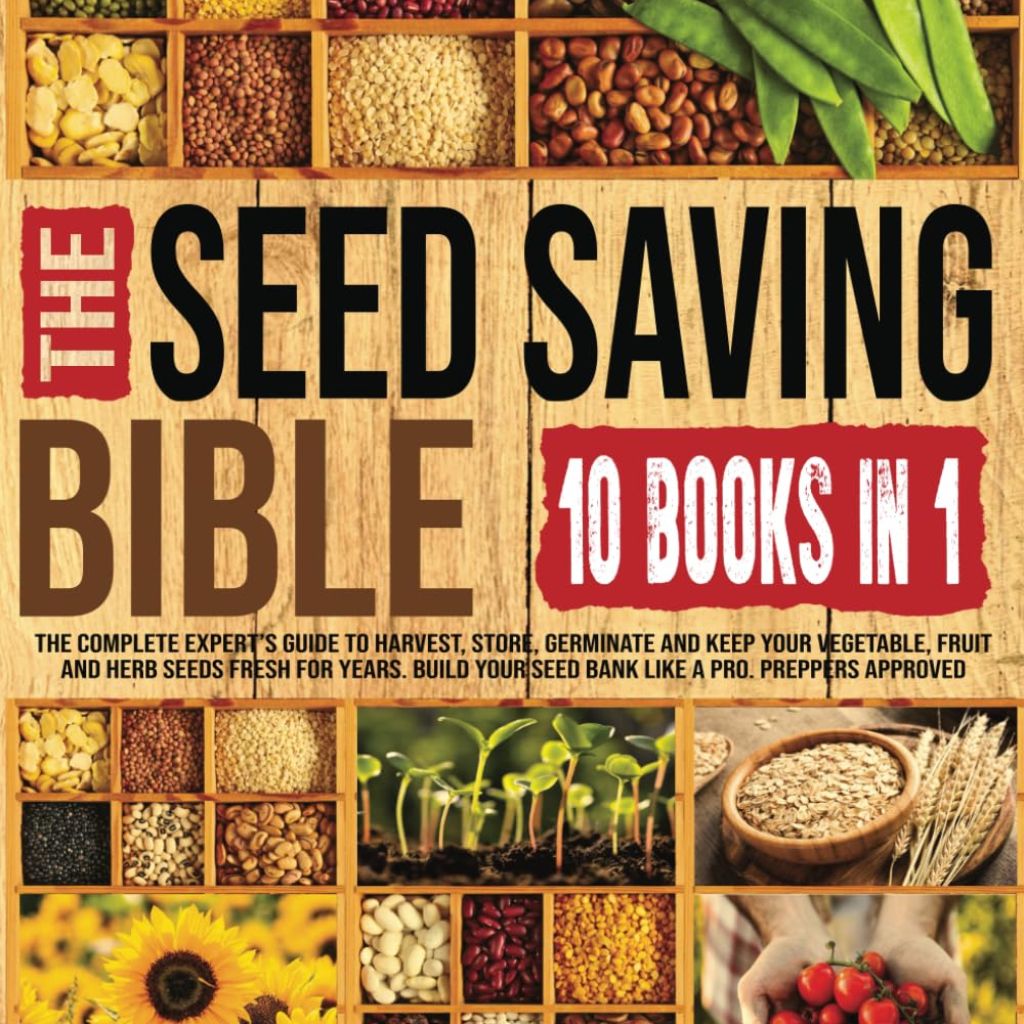
The Seed Saving Bible
The Complete Expert’s Guide To Harvest, Store, Germinate, Keep Your Vegetable And Herb Seeds Fresh For Years

The Seed Garden
The Art and Practice of Seed Saving
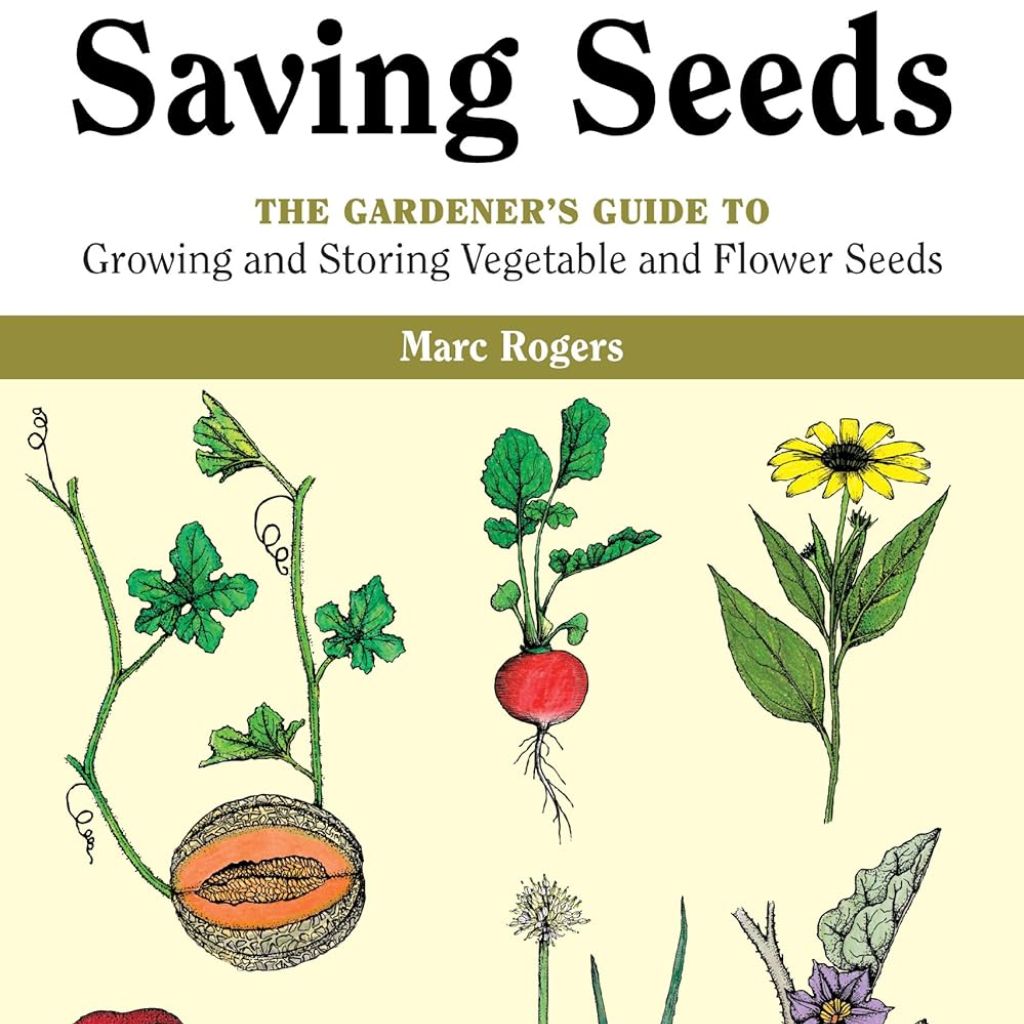
Saving Seeds
The Gardener’s Guide to Growing and Storing Vegetable and Flower Seeds (A Down-to-Earth Gardening Book)
Selecting the Right Seeds
Choose the seeds from your best-performing plants, as these will give you the best chance of replicating their desirable traits in future harvests. By selecting seeds from plants that thrived in your garden, you’ll guarantee consistent traits and allow for seed saving. Opt for open-pollinated or heirloom seeds, which ensure reliable traits and allow for seed saving.
Avoid hybrid seeds labeled as F1, as they may not produce offspring with desired characteristics. When selecting seeds, focus on plants that demonstrated disease resistance, desired taste, size, and other favorable traits. Tomatoes, peppers, beans, peas, and lettuce are great candidates for seed saving, making it easier to harvest and preserve seeds for future use.
Harvesting and Processing Seeds
As you’re ready to harvest seeds, wait until they reach full maturity and begin to dry out, guaranteeing viability for future plantings. Harvesting seeds at the right time is essential for maintaining their quality and viability.
Here are some essential steps to follow when harvesting and processing seeds:
- Collect seeds when they’re fully mature and dry, as this guarantees their viability for future plantings.
- Thresh tightly podded seeds by whacking them in a cloth bag to separate seeds from plant material.
- Winnow seeds by swirling the mixture to separate heavy seeds from chaff and debris.
- Store seeds in a cool, dry place away from sunlight and temperature fluctuations to maintain their quality.
- Label seeds with plant name and date of collection for easy identification and tracking.
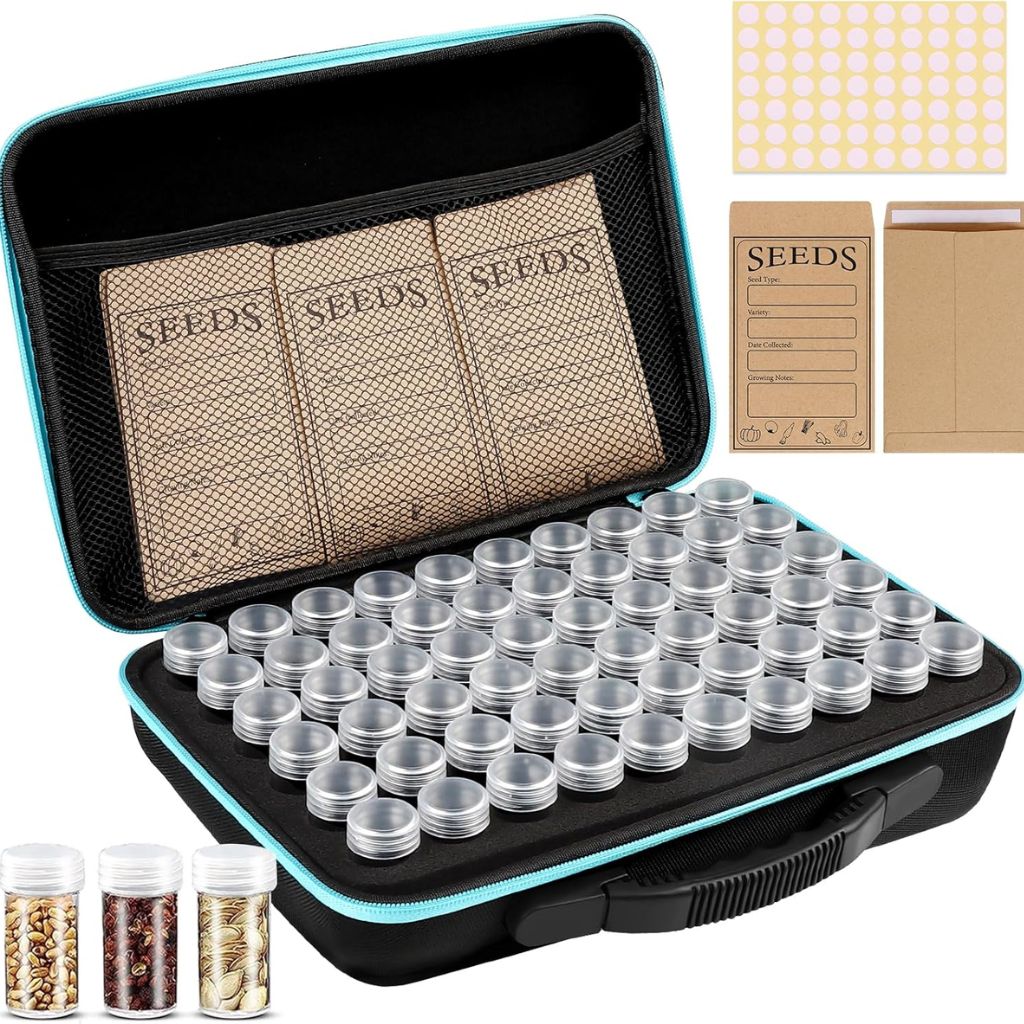
Jixsloft Seed Storage
60 Slots Seed Storage Organizer with 20 Seed Envelopes, Sturdy Seed Organizer Storage Box with Zipper Bag, Label Stickers

Xbopetda Seed Saving Box
Metal Seed Bin, Seed Storage Organizer Box, Seed Packet Container with Lid, Seed Envelope Storage Box, 4 Compartments
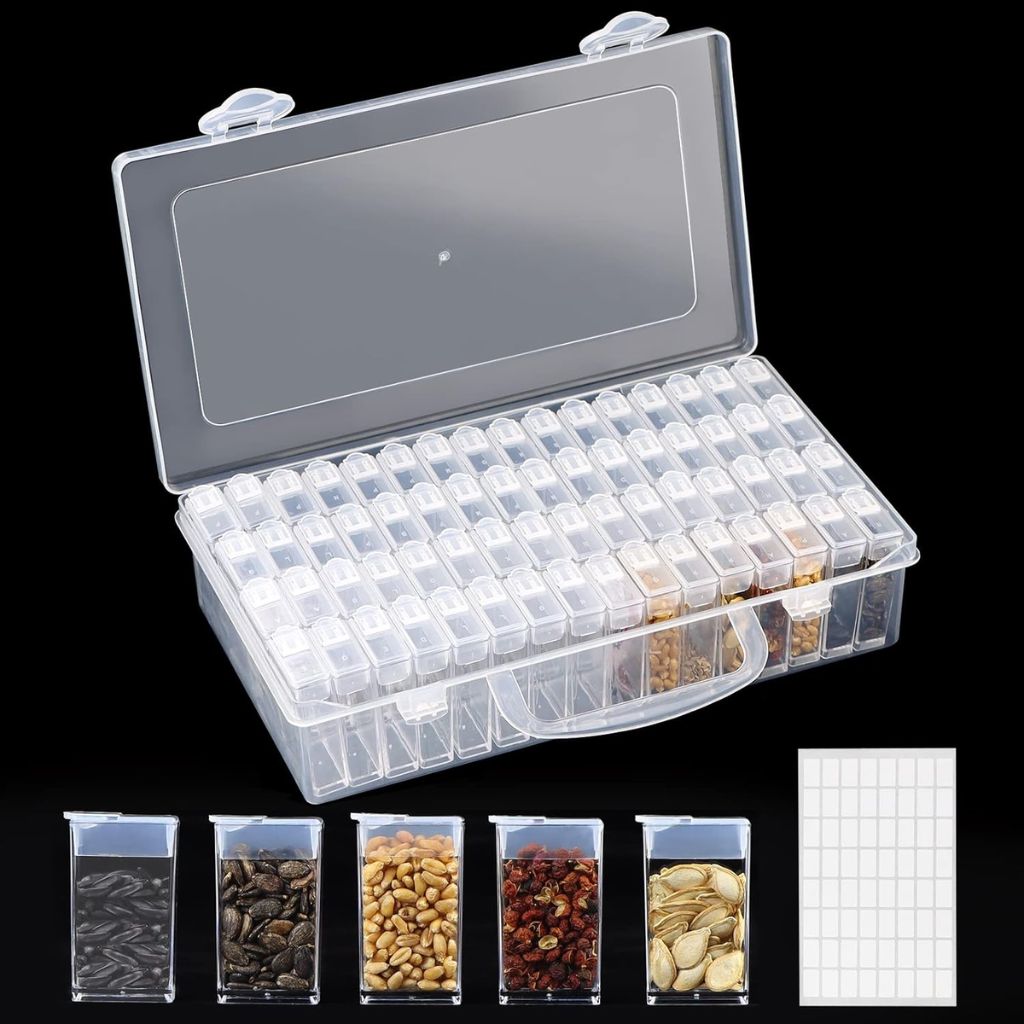
64 Slots Plastic Seed Storage Box
Organizer with Label Stickers(seeds not included), Seed Container Storage use for Flower Seeds,Vegetable Seeds
Storing and Preserving Seeds
Once you’ve harvested and processed your seeds, it’s important to store them properly to maintain their viability for future plantings. Proper seed storage guarantees that your seeds remain healthy and retain their genetic traits.
To achieve this, you’ll need to store them in a cool, dark place, away from humid environments and temperature fluctuations. Moisture exposure can be detrimental to seed viability, so it’s critical to store them in envelopes or glass jars that prevent moisture from entering. Proper drying before storage is also necessary to prevent mold and fungal growth.
Label your seeds with the plant name and date of collection, making it easy to identify them later. By following these simple steps, you’ll be able to preserve your seeds for several years, ensuring successful future plantings.

Ensuring Seed Purity and Quality
As you strive to guarantee the purity and quality of your seeds, it’s vital to verify the source of your seeds, handle them properly to prevent contamination, and take steps to control cross-pollination risks. This practice will maintain the integrity of your seeds and preserve the desired traits of your plants.
Seed Source Verification
You’ll want to verify the purity and quality of your seeds by taking a closer look at their source, making sure that the seeds you’re using are free from contamination and genetic inconsistencies. This is important in maintaining the integrity of your harvest. To achieve this, you’ll need to focus on seed source verification.
Here are some key factors to take into account:
- Practice proper isolation techniques to prevent cross-pollination and guarantee seed purity.
- Opt for open-pollinated varieties that provide reliable seed purity.
- Avoid hybrid seeds known for their unpredictable genetic characteristics.
- Choose heirloom seeds with a rich history of consistent traits for guaranteed purity.
- Store seeds in optimal conditions to preserve seed viability and maintain seed quality.
Seed Handling Best Practices
To guarantee the seeds you’ve verified remain pure and high-quality, it’s vital to handle them with care, using specific techniques to prevent contamination and maintain their integrity.
As you collect and save seeds from your plants, it’s imperative to separate the seeds from any debris or chaff to maintain seed purity. You can do this by threshing tightly podded seeds by whacking them in a cloth bag and winnowing to separate the heavy seeds from the chaff.
Labeling the seeds with the plant name and date of collection will help you track seed quality and viability. To control seed-borne diseases and insect eggs, utilize cleaning methods like washing, soaking in salt water, or hot water. Fermenting seeds surrounded by pulp can also help control bacteria and maintain seed quality.
Controlling Cross-Pollination Risks
By employing strategic techniques to control cross-pollination risks, you can safeguard the genetic integrity and quality of your saved seeds. Cross-pollination can compromise seed purity and quality, making it essential to implement isolation methods to prevent accidental pollination.
Here are some effective ways to control cross-pollination risks:
- Distance isolation: Space different varieties of the same species far apart to avoid accidental pollination.
- Time isolation: Stagger planting times or flowering periods to prevent plants from cross-pollinating.
- Mechanical isolation: Use bagging or caging to physically block pollen transfer between varieties.
- Preventing pollination: Use physical barriers or covers to prevent pollinators like bees and butterflies from transferring pollen.
- Proper storage: Store seeds in a cool, dry place to maintain their quality and genetic integrity.

Handling Seed-Borne Diseases
When working with seeds, it’s essential to prioritize disease prevention and sanitation to guarantee the health and viability of your seeds. You’ll need to implement effective methods to control and eliminate seed-borne diseases, which can be devastating to your crops.
Disease Prevention Methods
You’ll need to employ effective disease prevention methods to safeguard your seeds from seed-borne diseases, which can decimate your harvest and spread quickly through your garden.
Seed-borne diseases can have devastating effects on your garden, but with the right techniques, you can prevent disease outbreaks and guarantee healthy plants.
Here are some essential disease prevention methods to incorporate into your seed handling process:
- Use cleaning methods like washing, soaking in salt water, and hot water to eliminate pathogens
- Ferment seeds surrounded by pulp to control bacteria and diseases
- Process seeds properly, removing any contaminated material to prevent the spread of disease
- Implement preventive measures during seed collection and storage to assure healthy plants
- Understand different techniques for handling seed-borne diseases to maintain seed quality and prevent disease outbreaks
Sanitation and Disinfection
How do you guarantee that your seeds are free from disease-causing pathogens and insect eggs that can ruin your harvest? Sanitation and disinfection are critical steps in seed saving to prevent the spread of seed-borne diseases. When handling seeds, it’s important to use appropriate cleaning methods to remove any potential threats.
Washing, soaking in salt water, and using hot water are effective ways to remove pathogens and insect eggs. Fermenting seeds surrounded by pulp can also control bacteria and pathogens.
Proper sanitation and disinfection techniques are important for maintaining seed health and viability. By preventing the spread of diseases through seeds, you ensure healthy plant growth in future harvests.
Saving Seeds by Crop Type
When saving seeds from your harvest, it’s important to recognize that different crops demand distinct methods to guarantee successful seed collection and storage. You’ll need to separate the seeds by crop type to make sure you’re using the right approach for each plant.
Here’s a breakdown of how to save seeds for some common crops:
- Beans and peas: Allow pods to fully dry on the plant, then shell and dry the seeds further.
- Lettuce: Collect seeds from dry seed heads by placing them in a paper bag to finish drying.
- Carrots and beets: Store roots for a second year to produce seeds after cold storage.
- Peppers: Dry seeds on paper for about a week before storing.
- Eggplant: Dry seeds on cloth for several weeks to ensure proper storage and viability.
Frequently Asked Questions
How to Save Seeds From Your Garden for Next Year?
You’ll want to select the best seeds from your garden, considering factors like crop rotation, soil quality, and climate adaptation, to guarantee a thriving harvest next year, while also promoting pest resistance, disease management, and crop diversity through mindful farming practices.
What Is the Method of Storing Seeds for Future Use?
You store seeds for future use by utilizing Seed Vaults or airtight containers, controlling Climate and Moisture Levels, and implementing Humidity Control and Light Protection, while also considering Refrigeration Methods and Freezer Storage for best preservation.
How Do You Save Seeds for the Future?
You guarantee seed viability by properly drying and storing seeds in a cool, dark place, promoting seed longevity and breaking seed dormancy, while utilizing seed treatment and certification for a thriving seed exchange and preserving seed diversity.
How to Harvest Seeds From a Garden?
You diligently choose seeds from healthy plants, taking into account factors like crop rotation, soil prep, and pest control, to guarantee a bountiful harvest, and then pinpoint the perfect harvest timing to snag those ripe seeds for future planting.
Try These Recommended Audio Books!
 Saving Seeds, Preserving Taste |
Our Best Pick
 Successful Container Gardening |
 The Gardener’s Guide to Starting Seeds Indoors |
|---|
Conclusion
By following these steps, you’ll be able to harvest and save high-quality seeds from your best-performing plants, ensuring a consistent supply of your favorite crops for seasons to come.
With proper storage, labeling, and disease prevention, you’ll maintain seed viability and purity.
By saving seeds, you’ll preserve the unique traits of your crops and enjoy a bountiful harvest year after year.
Get more posts like this
Subscribe to our mailing list and get interesting homesteading and green living info and updates to your email inbox.
Thank you for subscribing.
Something went wrong.


